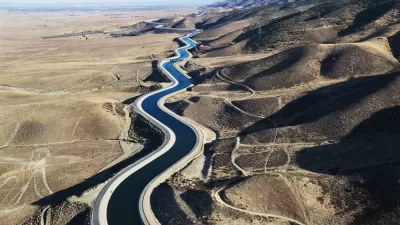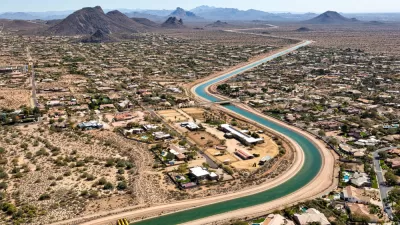The future has arrived in Western Australia thanks to new technology created and implemented by Carnegie Wave Energy. The CETO project marries renewable power with desalination—a timely marriage when droughts and climate change take center stage.
"In one of the country’s biggest infrastructure projects in its history, Australia’s five largest cities are spending $13.2 billion on desalination plants capable of sucking millions of gallons of seawater from the surrounding oceans every day, removing the salt and yielding potable water," writes Amy Yee of The New York Times.
One of the biggest challenges is to how to supply the energy while creating the lowest carbon footprint. That's where Carnegie Wave Energy's renewable power comes into play.

"Named after the Greek sea goddess, CETO technology produces zero-emission electricity by using submerged buoys tethered to seabed pumps, which drive hydroelectric turbines via high-pressure water through a subsea pipe," writes William Yeoman of The West Australian. They buoys create the energy by harnessing the waves, causing them to go up and down.
"In late February, the buoys started supplying 240 kilowatts each to the electricity grid at HMAS Stirling, Australia’s largest naval base," writes Yee. "They also help run a desalination plant that transforms seawater into about one-third of the base’s fresh water supply."
"The potential energy in the ocean's waves globally is twice what the world currently consumes, so there is enormous potential for wave energy," states Carnegie Wave Energy boss Michael Ottaviano. [The West Australian].
If you're unsure as to how the bobbing of the buoys creates energy, The Economist has an excellent diagram and description in their March article on the project.
Hat tip: Loren Spiekerman
FULL STORY: Catching Waves and Turning Them Into Electricity

Alabama: Trump Terminates Settlements for Black Communities Harmed By Raw Sewage
Trump deemed the landmark civil rights agreement “illegal DEI and environmental justice policy.”

Study: Maui’s Plan to Convert Vacation Rentals to Long-Term Housing Could Cause Nearly $1 Billion Economic Loss
The plan would reduce visitor accommodation by 25% resulting in 1,900 jobs lost.

Planetizen Federal Action Tracker
A weekly monitor of how Trump’s orders and actions are impacting planners and planning in America.

Wind Energy on the Rise Despite Federal Policy Reversal
The Trump administration is revoking federal support for renewable energy, but demand for new projects continues unabated.

Passengers Flock to Caltrain After Electrification
The new electric trains are running faster and more reliably, leading to strong ridership growth on the Bay Area rail system.

Texas Churches Rally Behind ‘Yes in God’s Back Yard’ Legislation
Religious leaders want the state to reduce zoning regulations to streamline leasing church-owned land to housing developers.
Urban Design for Planners 1: Software Tools
This six-course series explores essential urban design concepts using open source software and equips planners with the tools they need to participate fully in the urban design process.
Planning for Universal Design
Learn the tools for implementing Universal Design in planning regulations.
Caltrans
Smith Gee Studio
Institute for Housing and Urban Development Studies (IHS)
City of Grandview
Harvard GSD Executive Education
Toledo-Lucas County Plan Commissions
Salt Lake City
NYU Wagner Graduate School of Public Service





























